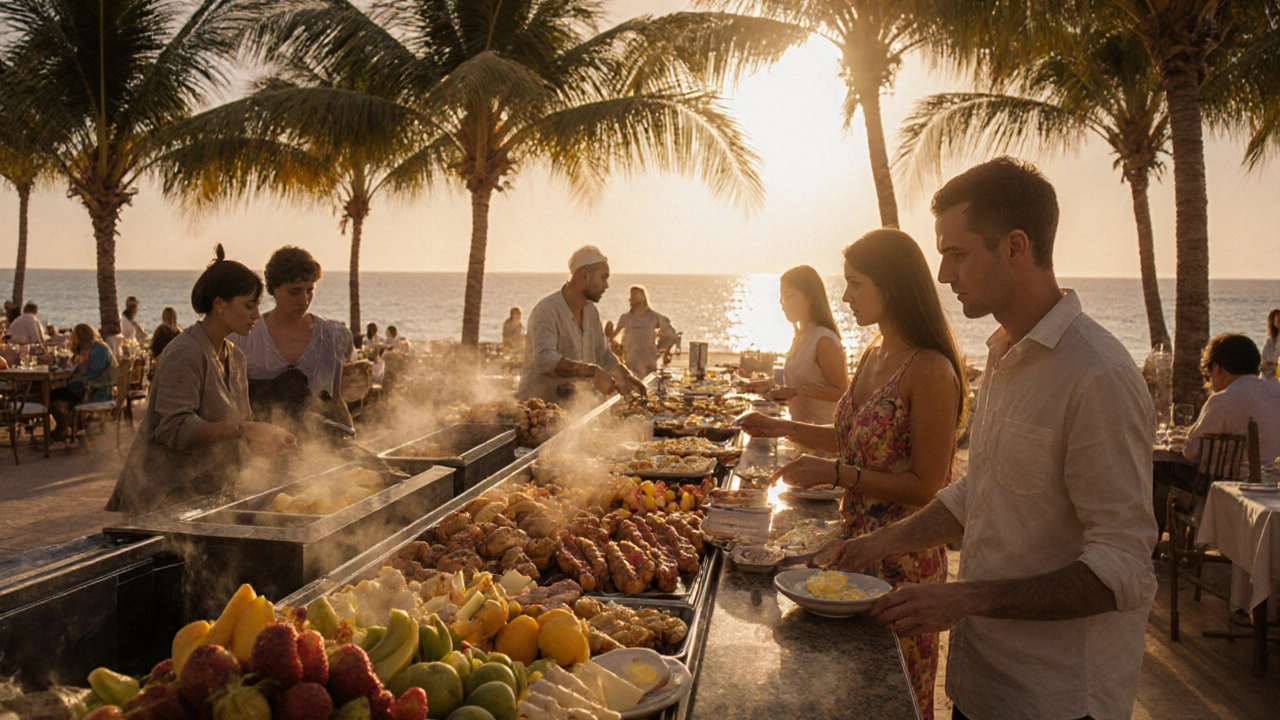Resort Food Options: A Practical Guide for Your Stay
When you book a getaway, the food can make or break the experience. Resorts across the UK offer a range of dining styles, from self‑catering cottages to full‑service all‑inclusive hotels. Knowing what’s on the menu before you arrive helps you pack smarter, budget better, and avoid disappointing surprises. Let’s break down the most common food options you’ll encounter and how to choose the right fit for your trip.
Typical Dining Choices at UK Resorts
Self‑catering cottages. These rentals give you a fully equipped kitchen, so you cook your own meals. It’s perfect if you enjoy planning menus, have dietary restrictions, or simply want to save money. Most cottages include basic pantry items like tea, coffee, and sometimes a welcome basket of local produce.
Bed‑and‑breakfast (B&B) inns. A B&B usually serves a hearty breakfast included in the room rate. The meals are home‑cooked and often feature regional specialties, such as a full English, scones, or smoked fish. Evening meals are usually off‑site, so you’ll need to explore nearby pubs or restaurants.
Full‑service resorts. Larger hotels often have multiple restaurants on‑site – a casual buffet, a fine‑dining outlet, and a bar‑cafe. Breakfast might be a buffet or plated service, while lunch and dinner can be à la carte. Some offer themed nights, like seafood Fridays or Indian Wednesdays, giving you variety without leaving the property.
All‑inclusive packages. With this option, you pay one price for accommodation, meals, drinks, and often some activities. Buffets are common for breakfast and dinner, while snack stations and poolside grills keep you fueled throughout the day. It’s a hassle‑free way to eat, but make sure the menu suits your tastes before you book.
Specialty dining. Certain resorts boast a signature restaurant – think a Michelin‑starred chef or a farm‑to‑table concept. These spots usually require reservations and come at a premium, but they’re worth it for a memorable culinary experience.
Tips to Get the Best Value and Experience
First, check the inclusive items in your rate. Some resorts include only breakfast, while others bundle all meals and drinks. Knowing this upfront prevents surprise charges later.
If you have dietary needs, contact the property before you arrive. Most places are happy to accommodate gluten‑free, vegetarian, or allergy‑specific requests, especially if you give them a heads‑up.
Look for local food markets near self‑catering stays. Buying fresh produce, cheese, and bread from nearby shops not only supports the community but also upgrades your home‑cooked meals.
When staying at a full‑service resort, explore the “kids’ menu” or “early‑bird specials.” These options often provide a lighter price tag and portion size that suits families.
Finally, read recent guest reviews. Travelers frequently mention whether the restaurant quality lives up to the brochure and if the staff is helpful with menu changes. A quick skim can save you a disappointing dinner.
Whether you’re a foodie hunting local flavors or a budget traveler looking to stretch every pound, understanding resort food options lets you plan ahead and enjoy your stay without stress. Use this guide as a checklist, ask the right questions, and make the most of every bite on your next UK retreat.
How Many Meals Do You Get at All-Inclusive Resorts?
All-inclusive resorts typically offer three meals a day plus snacks and unlimited drinks. Find out exactly what’s included, how dining varies by resort type, and what you might still need to pay for.
Dining Flexibility at All-Inclusive Resorts: Can You Eat Anytime?
All-inclusive resorts offer a stress-free vacation experience with unlimited food and drink options. But the question remains whether guests can truly eat whenever they want. Exploring different resorts reveals a general policy of flexibility in meal times, though specifics can vary. Guests should be aware of key considerations such as resort amenities, restaurant hours, and snack options.

